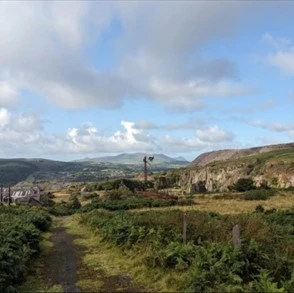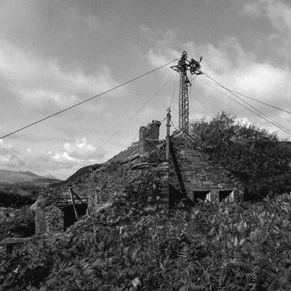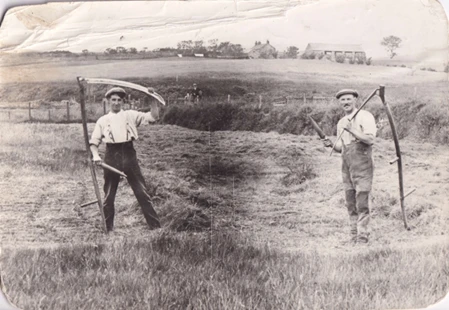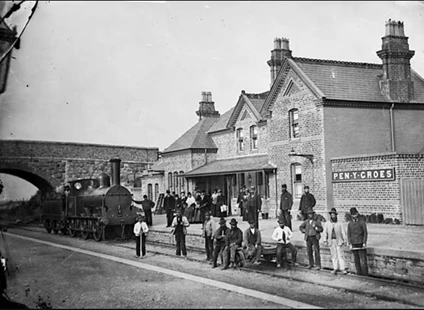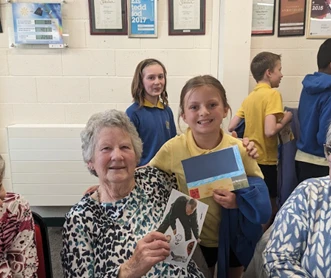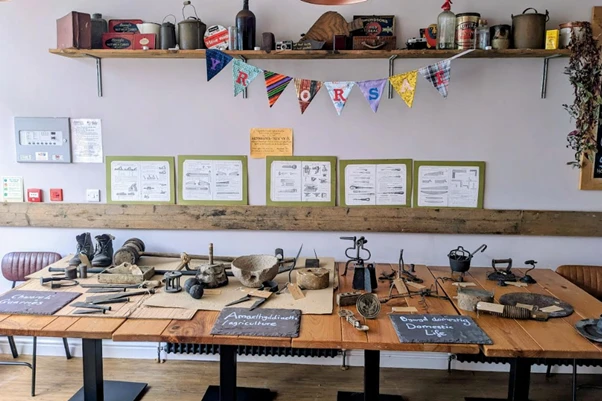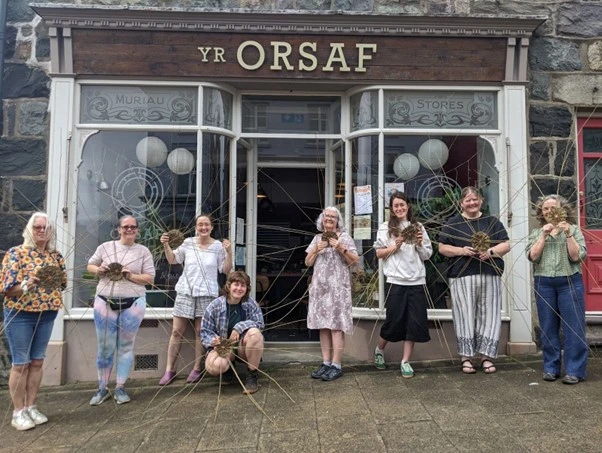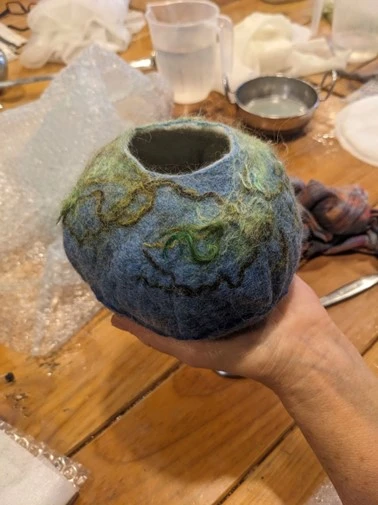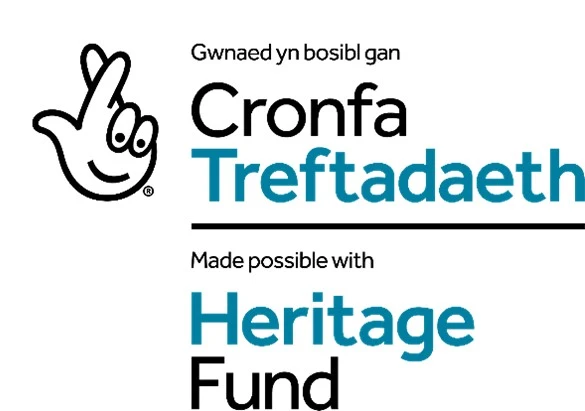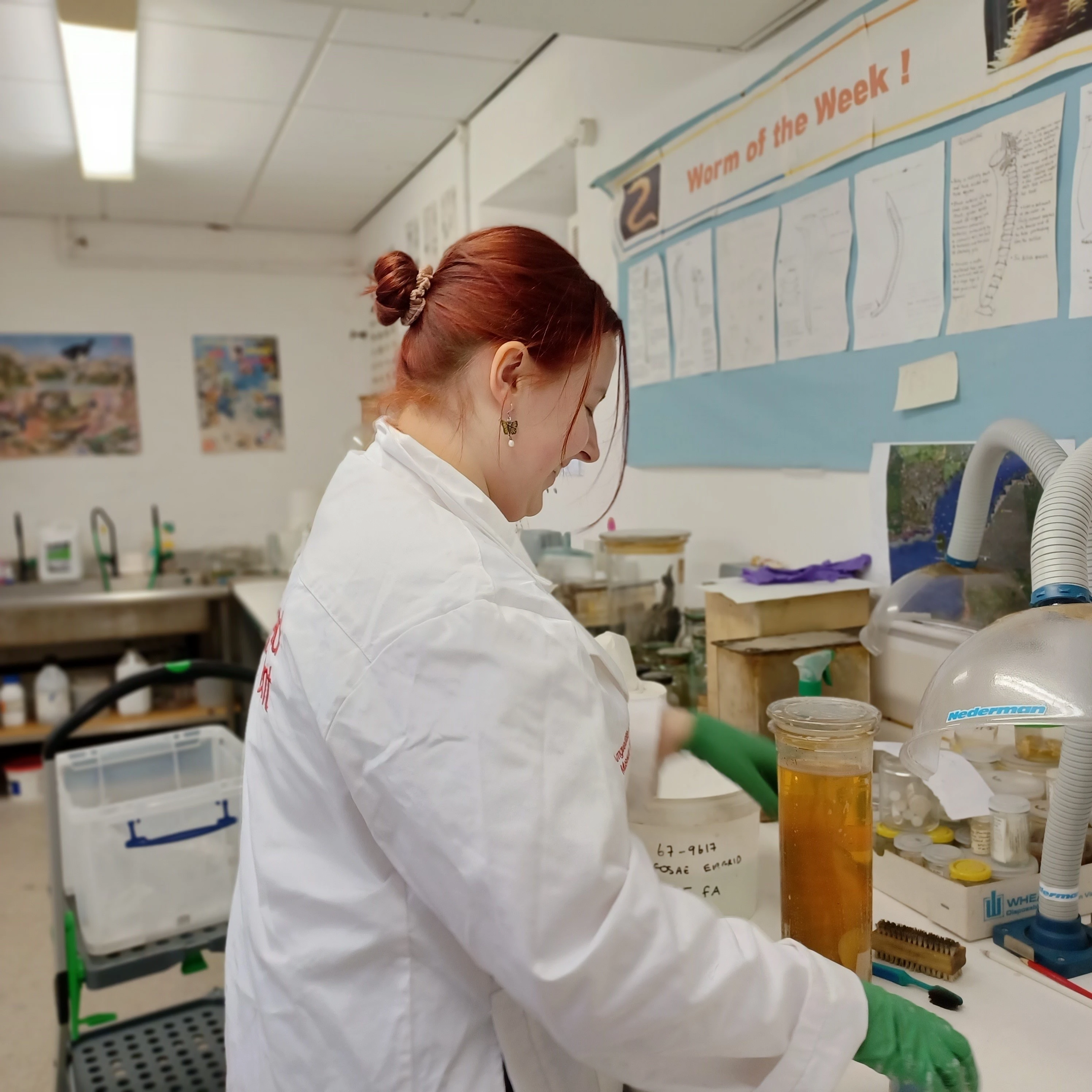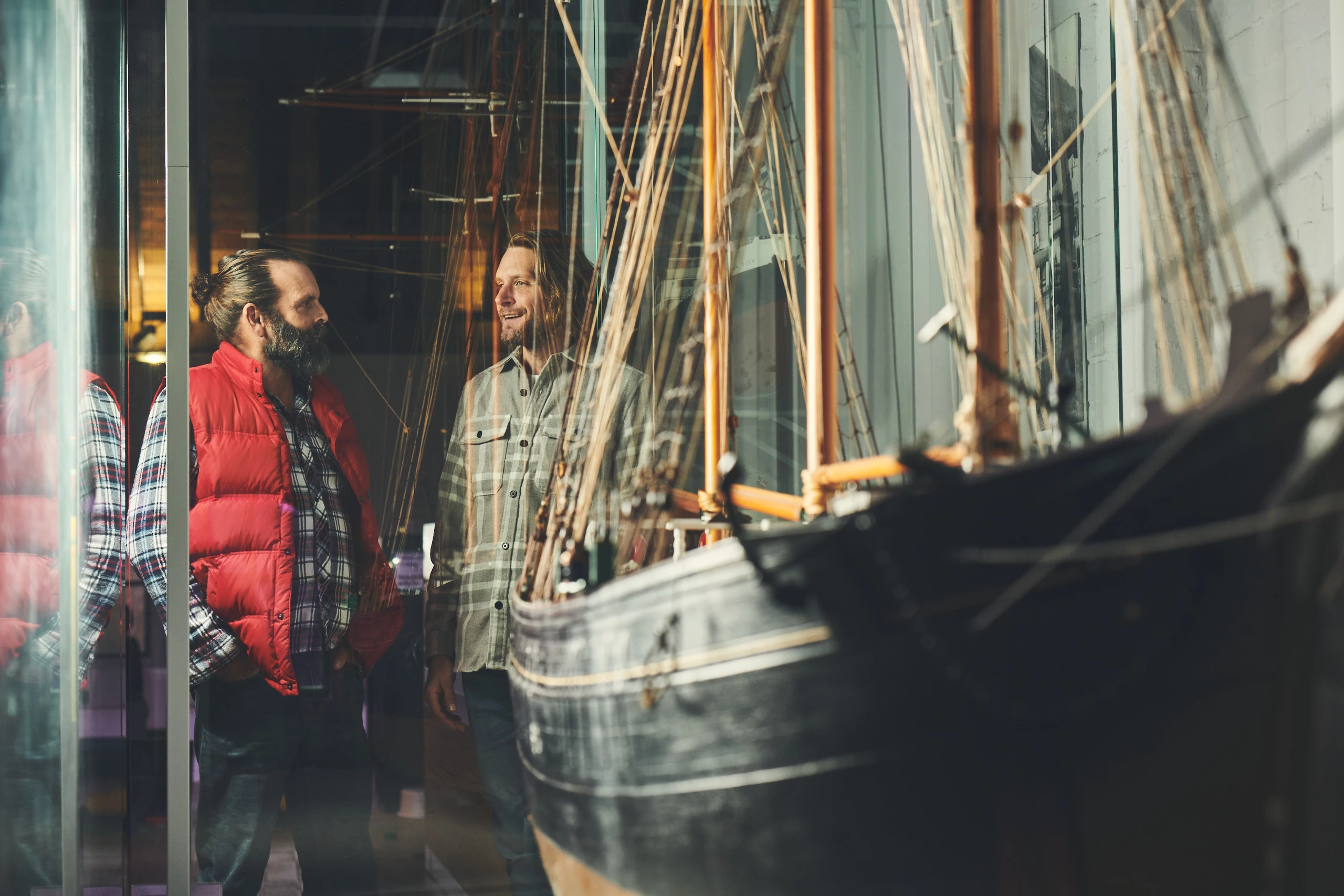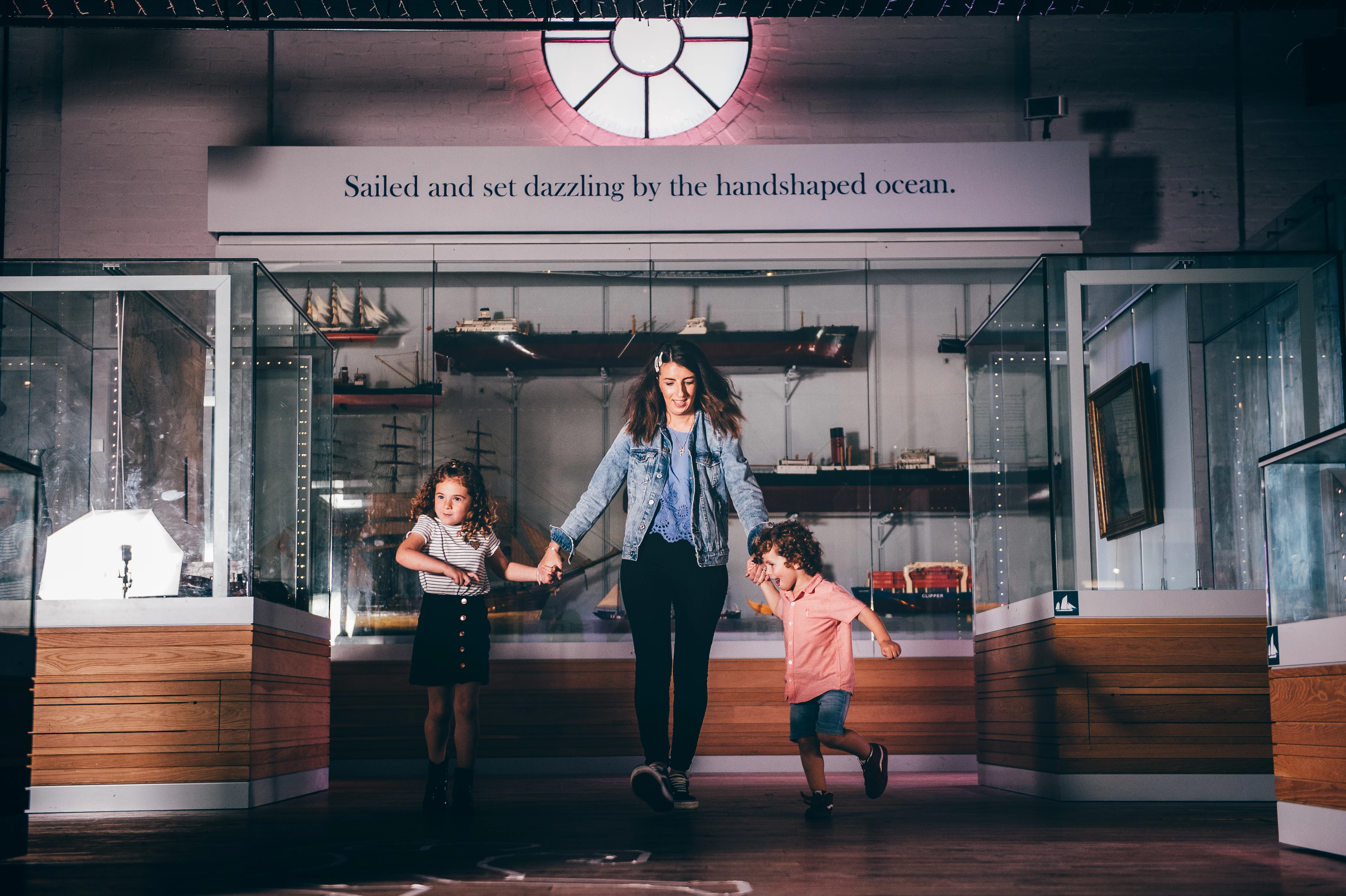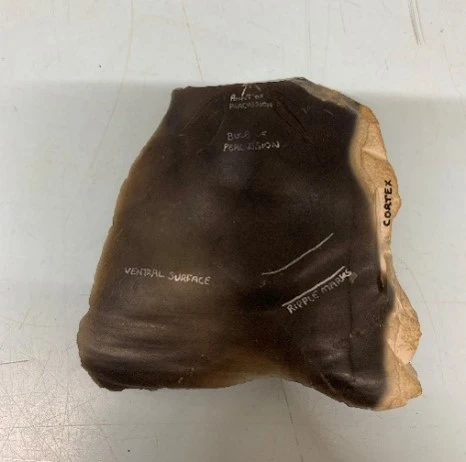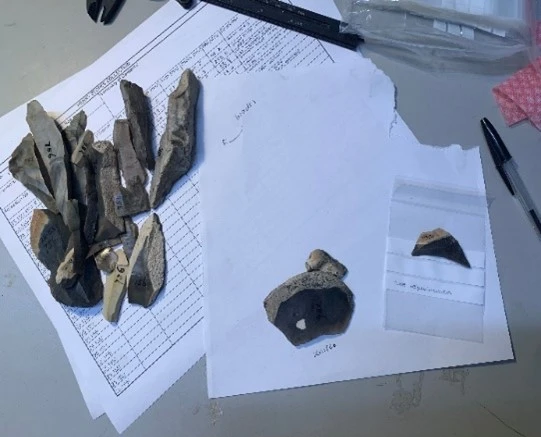Treftadaeth Byw: Living Heritage in Dyffryn Nantlle - Wales REACH
, 30 October 2025
As part of the Wales REACH project, we’ve had the pleasure of collaborating with a range of housing associations and community organisations across Wales. Among these are Adra and Yr Orsaf, both dedicated to supporting people in North Wales with housing and community initiatives.
Discover what Lotti, Yr Orsaf’s Heritage Officer, has been organising and delivering in Dyffryn Nantlle as part of the Wales REACH programme.
How do cultures, histories, and language sit within the open arms of this valley, swim with the rivers, and dance across the etched cliff faces? These are some of the things I have been ruminating on as a Heritage Officer - neu Swyddog Treftadaeth - in Dyffryn Nantlle over the past few months. See Fig 1.
I arrived to this role at Yr Orsaf community hub feeling a post-uni-lostness; I had returned to my childhood home near Clynnog after spending time away in Oxford and felt pretty rusty in my Welsh. Thus, working as a heritage officer in Dyffryn Nantlle was a time re-turn and re-connection.
Our first session - Noson Hen lunia/Old Pictures Evening - was a chance to open up conversations about heritage. It was golden to hear people’s pride and passion for their sense of place, and to see such care that people had for material pieces relating to their past. See Fig 2.
Seeing old images of Penygroes shocked me: a bustling place of independent shops, trains, quarrying, a cinema, when compared to its relative understatedness now. Someone told me about the fun they had dancing and singing at farms for Noson Lawen and the excitement of meeting people from different towns at Clynnog disco. Beyond nostalgia, seeing how Dyffryn Nantlle has changed over time also gave me excitement at the feeling of possibility and was a reminder of the importance of ongoing community work happening at places like Yr Orsaf. See Fig 3.
Our Noson Streuon - storytelling night - was bustling with eager listeners for Gwynn and Gethin’s tales. I was mesmerised by Gethin’ delicate, unfurling image of the oak sampling sprouting up before the grand tale of Blodeuwedd and Lleu Llaw Gyffes. What felt most meaningful were that the stories were rooted in this landscape - that the story of the tylwyth teg unfolded on a farm just across from the top of the high street and another one just down at the river I cycled passed on the way to work. It added cultural depth to my internal map of home. I had never been to a storytelling yn Gymraeg. It felt right to hear these stories in the language of which they had been borne, the language of this land; a powerful holder of heritage.
Heritage is a personal thing, where complex feelings towards it are shaped by particular moments and experiences. As a heritage officer, this means a humble approach that recognises that people already have their own heritages and connect to them in a range of personal ways.
Our collaging afternoon with year 6 from Ysgol Bro Lleu and our fortnightly coffee club for older members of the community - BeNawnNi - was an example of the reciprocal learning that can emerge from intergenerational exchange. Many of the older members were unsure about collaging since it was something that they did not have much experience of. Meanwhile, the primary school kids got stuck right in and took up the opportunity to show their older counterparts what they were doing. They worked together to collage their favourite places in Dyffryn Nantlle and talk about what it meant to them. See Fig 4.
Our three open evenings in May - Nosweithiau Treftadaeth - provided a space for people to share their knowledge and experiences of living in Dyffryn Nantlle. I got to hear about captivating things that have punctuated people’s lives: the trembling cupboards of the 1984 Llŷn Peninsula earthquake (5.4 Richter scale!), traces of old ways of land ownership in the landscape such as names carved on rocks, and a familial pride at the sight of old farming equipment such as maen melin (millstones). Even mysterious, ghostly musings of a flying circus act that once came to Dorothea Quarry. See Fig 5.
From these heritage events arose particular challenges. How, for example, to engage secondary school age people in heritage? I found the recent work by Gwyrddni with local schools on the theme of climate change very inspiring. Their work culminated in a bright, big book and a beautiful range of singing and poetry performances for the crew at BeNawnNi. What struck me was that their work not only touched on themes of climate change but were also deeply rooted in a sense of place and heritage. This performance showed me the opportunities that arise when we approach heritage with loosened meanings, one that does not wholly have to be fixed on the past, but is an ongoing process; a conversation that encompasses practices and ways of living that are important for the future.
Following this theme of heritage as an ongoing process, later workshops explored heritage by actively doing arts and crafts. We had weaving and natural dyeing sessions with the artist Ella Jones, made sculptural portraits of local famous figures with Luned Rhys Parri, and braided willow baskets with Eirian Muse while listening to Welsh folk on BBC Radio Cymru. See Fig 6.
Following a theme of wool, we had a series of sessions on natural dyeing woollen embroidery threads with a local community textiles company called Tecstiliau, and a bowl felting workshop with Nicole LeMaire. Angharad Tomos kindly showed me poems along the way which were relevant to the agricultural love of place that has been nurtured in this area. Reading them during the workshop provided a lovely framing for reflecting on the relationship between wool and this landscape while working with our hands. Many people mentioned grandmothers who had been skilled quilters, embroiderers and makers of clothing. See Fig 7 and 8.
Heritage will continue to be cultivated in Dyffryn Nantlle. The very active ‘Criw Kate’ group in Penygroes are organising a festival for the prominent writer - Kate Roberts - at Cae’r Gors in September. I am particularly excited about an old place names project which we started off in August with a session for collecting field names from farmers. Place names - like ‘mini pdf files’ - give interesting and surprising clues about past land use, topographical features like water sources, or can even connect to folktales. Names can change with different ownership or be passed down for generations. Elinor Gwynn and Carwyn Graves - who recently did a talk about the ‘Iaith Yn Y Tir/Language in The Land’ at Yr Orsaf - have been particularly inspiring in this regards; attending to the ways relationships with land have been carried in Cymraeg - is key to making a more just future which respects the beautiful ways that people have inhabited places across time.
I am grateful to have been entrusted with people’s memories and stories over the past few months. To braid these strands together, I hope that we can make something creative and collaborative with these place names, such as a quilt or an embroidery piece, to celebrate their beauty and rootedness in this landscape.
Keep an eye out for others upcoming blogs, showcasing the amazing work that’s been happening across all our participating communities.
Wales REACH is made possible with The National Lottery Heritage Fund. It is a partnership between thirteen organisations and is led by The Open University and Amgueddfa Cymru. It is funded with a grant from the National Lottery Heritage Fund. The current phase started in autumn 2024 and is scheduled to run until autumn 2026.
